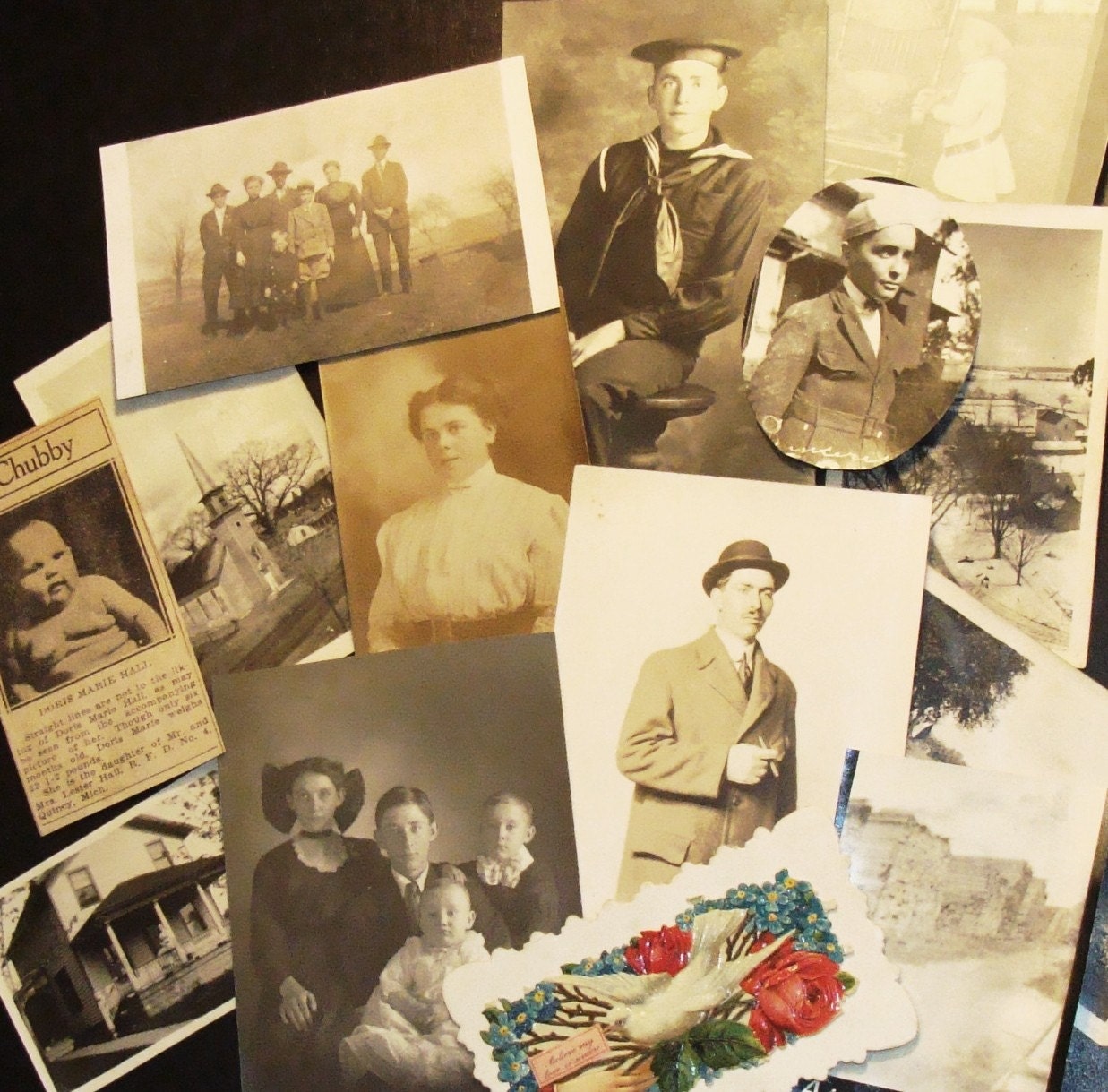During the early years of photography, there have been basically 3 overall types of photographs (in terms of materials they were printed on): paper and cardboard, metal or glass. The most common are photos on paper, and their main types are the Carte-de-visite, the cabinet card and the photo postcard.
Metal photos were either tin-type or daguerreotype, and photos on glass were likely ambrotypes. Each type of photo has a time-frame and use associated with it. Since the metal/glass photos are relatively rare, this article will focus on the more common paper/cardboard varieties.
Carte-de-Visite
Also referred to simply as cartes. These small photos were glued to a cardboard backing that was about 10cm by 6cm in size. The size was constant because photo albums of the day were made with holes cut in the stiff pages to hold these carte photos. The backing card was usually decorated with the name of the photographer, along with some decorative flourishes. The earliest cartes are from 1859, and had square corners.In order for the photos to slide smoothly into the albums, they started being made with rounded corners around 1872. But the square corners did come back again later in 1900, possibly as the use of albums became less popular. The card backing was quite thin with the earlier photos, and got heavier as the years progressed. Those made after 1880 were very thick and sturdy. Carte-de-visite stopped being produced in the early 1900s.
Cabinet Card
A similar style and design of photo as the above described cartes, but larger. Also mounted on cardboard backing, these photos also showed the name of the photographer on the back, or under the photo on the front. Cabinet cards were about 16 ½ cm x 10 ½ cm in size. Cabinet cards date a little later than the Carte-de-visite, being first introduced around the late 1860s.Most of them are dated from the 1870s though. These photos always had rounded corners until 1900, when both rounded or square cards were produced.Photo Postcard
I'm sure the name explains this one. It became popular to have photos printed directly on cards that could be sent through the mail, as a convenient way to share photos with friends and family. These cards are around 14cm x 9 cm, and have obvious postcard markings on the back. If you're lucky, a used card will have a dated postmark. Photo postcards were being made in the very early 1900s, just as the other styles of photos were losing popularity. They continued in production as late as the 1940s and 1950s.Dating Old Photographs
If you have old photographs with no dates, there are ways to narrow down the time frame of when they were likely taken. Look at the clothes, and the type of photo itself.
In your collection of old photos, do you have some with no dates nor any clear way of telling when the photo was taken? If you know who the person is, then you can narrow down the dates somewhat but who doesn't have a few mystery photos with no notes sitting in their history collections, just crying out for further identification.
If you can pinpoint the date (somewhat) then you may even be able to figure out who the person is by connecting them with the right generation in your family tree. Family resemblance is a very handy tool, but remember that your great-grandmother may have looked an awful lot like your own mother when she was younger. Dates can help eliminate that problem.
Ladies fashions are usually used as a date indicator, since they changed far more frequently than men's fashion. Dress styles, presence or absence of hats and other accessories, hair styles and even poses. Fashion-Era is an excellent website to explore the fashion styles of the past. There are pages for the 1800s but most of the site focuses on the styles of the 1900s. You can also find some great examples and quick things to look for at Family Chronicle.
Another way to tell the age of the photo, is the style and format of the photo itself. Is it printed on a cardboard card with the photographer's name on the back, or is it a thin sheet of metal mounted in a matte frame? Or are your family photos actually printed as postcards, designed for easy mailing? You can narrow down the date window by using the type of photo.
The Brownie camera was invented in 1900 and became wildly popular in the 1950s, allowing anyone to take their own photographs. During this time period, you'll find many more amateur photos which can offer many more clues by letting you see the backgrounds of candid shots. Once cameras were basically available to anyone, you'll find many more family photos since it no longer required an expensive trip to the studio.
Modern-era photos are much easier to identify because we are all still reasonably familiar with the time frame, including fashion and other indicators. That photo of your aunt in the day-glow bell bottoms must certainly date to the 70s.


This is a very good post. Thank you for pointing out the old knife
ReplyDeleteClipping Path |
Clipping Path, shadow-service |
shadow service |